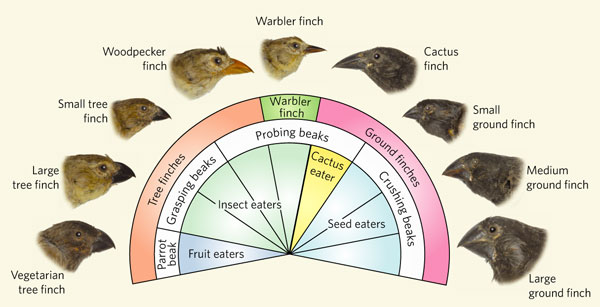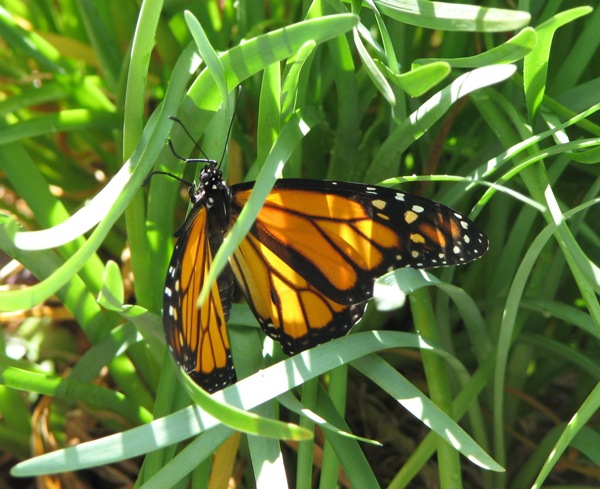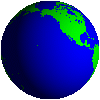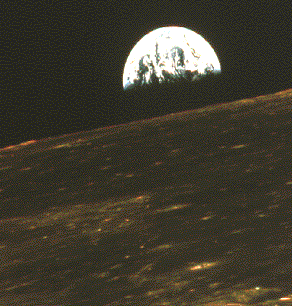
The Dominant Animal, Chapter 2; The Entangled Bank
an on line guide
1) Edward O. Wilson, Storm over the Amazon, Diversity of Life . 2) Annie Dillard: Pilgrim, "Living like Weasels."
Chapters
Two
Examples | How a species originates | 1) ecological changes | 2) isolation | 3) coexistence & coevolving | milieu
The "Entangled Bank" is a phrase used by Charles Darwin, concluding remarks to his great work: On the Origin of Species.
Darwin's discoveries of an ecological milieu : the relation among surroundings, food sources, range, and migratory habits impacting the inheritance of behavioral characteristics and physical features of organisms.
Species, examples of close relatives:
Chimpanzees, one of five types of great apes, 99 percent like humans in DNA sequences. Our closest relatives: Bonobos and Champanzees are our first cousins.
Between four and seven million years ago bio-molecular evidence from DNA sequencing reveals that humans and these pair of great apes diverged from a common ancestor population.
http://www.nature.com/nature/journal/vaop/ncurrent/full/nature11128.html
Where these families, species and varieties ultimately came from.
"The whole system, whether we are talking about life, or about water rising into the clouds and falling again, is finally dependent on the steady flow of energy from the sun. While never actually disobeying the laws of physics and chemistry–and certainly never disobeying the Second Law–energy form the sun powers life, to coax and stretch the laws of physics and chemistry to evolve prodigious feats of complexity, diversity, beauty, and an uncanny illusions of statistical improbability and deliberate design. So compelling an illusion that it fooled our greatest minds, until Darwin burst on the scene. Natural selection is an improbability pump: a process that generates the statistically improbable."
Richard Dawkins, pp. 415-416.
Vocabulary
diversity, diversification, inorganic & organic, biotic species, predator–prey relations, "milieu," populations, warblers’ song, Monarch butterflies, mimicry, natural selection, DDT resistance.The phrase ecological milieu has a social meaning, referring to how guilds, or groups and social animals behave in the use of a home range, a migratory pattern, or feeding.
GO TO NEXT
Species
page 43.
What is a species? “it represents a segment of a continuum and does not have a clear agreed upon definition (we like ‘distinct kind’ for species, for want of better [terms]).”
The relationship between reproduction and the range or conditions for successful exploitation of resources for any creature is fundamental to defining a species.
Three important concepts:
How a species originates| 1) ecological changes | 2) isolation | 3) coexistence & coevolving
![]()
1. What are species?
Some examples:
“How do the different kinds arise?”
p. 35.
isolation causes variability to separate populations. “natural selection working on the results of mutation, recombination, migration, and genetic drift (inherent variability of genomes) also cause populations to become different from one another forming diverse kinds of organisms.”
page 36.
a. Birds, warblers
i. The yellow rumped warblers
ii. “not different enough,” we consider them all members of the same species.”P. 37
Warblers:
- Yellow rumped compare songs (Dendroica coronata: myrtle vs Audubon’s)
- Dendroica kirtlandii Kirtland’s warbler sound
- Dendroica palmarum Palm warbler sound
Cornell University Ornithology guides on lineb. “The grand diversity of life” p. 38
c. vast changes in several physical conditions of life gave rise to: cats, manatees, monkeys and apes
i. Cats (felines) emerged before Pangaea broke up
1. Lions, cheetahs, leopards and tigers, snow leopards
2. jaguars, and panthers, cougarsii. Trichechus:
- manatees (Americas & Africa in Atlantic)
- dugongs (Asian Pacific)
iii. Monkeys before the fracturing of Gondwanaland
1. old world (Africa and Asia = Gondwanaland)
2. new world (South America = Gondwanaland)
(climate impacts –meaning the dessication (drying out) of Africa– on hominidae asthe family was separated 9 million years ago: Homo from from Pan & Pongidae, p. 53)
1. Forest chimps (display estrus)
2. Bonobo chimps (suppressed estrus)Humans have inherited hidden ovulation a form of suppressed estrus where hormonal changes that bring about female fertility are not obvious to observers.
“Such changes in the living environment can be as important to the diversification of organisms–to the process of creating new species– as changes in the physical environment.”
P. 39.
2. Geographic Speciation, p. 39
a. Swainson’s and hermit thrushes
b. Ernst Mayr’s model of separation due to habitat divisions
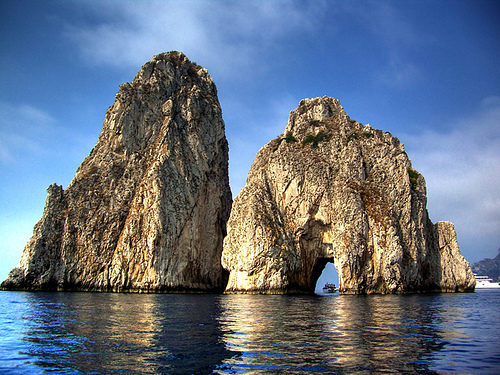
In the Gulf of Thailand the limestone remnants of world's long perished rise above the flooding tides.
3. No Species is an Island or better: fortunate survivors work together well!
he biological term for coexistence over tine is Coevolution
“the evolutionary interaction of ecologically intimate organisms.” P. 45.
a. Insects & flowering plants (51)
b. Parasites & hosts (plasmodium falciparum, recall malaria – p. 24)
c. Coral reefs & fishes: what these associations indicate?“the grass-grazer and cleaner-predator relationships are examples of coevolution.”
p. 45
“harmless insect mimics.” p. 47
“Monarch butterfly” p. 48
Pesticide resistant insects (we forget coevolution’s lessons), p. 49
Drug-resistant bacteria, p. 50
Flowering plants and insects were and are co-dependent, p. 51
Ehrlich has stretched the definition of coevolution (any two–evolving ecosystems) p. 52
Monarch butterfly emerging from its chrysalis.[Siry, 2008]
Milieu is taken from the French word meaning "a person's social environment," [ She grew up in a refined, orthodox milieu.] and by extension I mean the aggregate living situation of members of a species or the species in both the physical and the living conditions of existence.
Etymological ORIGIN middle 19th century: French, from mi 'midst' + lieu 'place.'
In the midst of a place–literally. The Greek term for place is topos, and in ancient Greece, the botanist Theophrastus used the term "oikios topos" for the 'ecological place' where the conditions are optimal for a plant to thrive and produce seeds and those seeds to grow.
"both the physical and the living conditions"
terms synonyms synonyms synonyms milieu existence

physical abiotic
living biotic
Annie Dillard: Pilgrim at Tinker Creek, "Living like Weasels"
Because she poses three significant questions:
1) Where is the wild in one's backyard?
2) What is the value of instinct in a culturally dominated world?
3) could two live as one?
Sources:
Richard Dawkins, The Greatest Show on Earth, pp. 415-416.
Mayr, The Development of Biological Thought
Nature, recent journal
"Two African apes are the closest living relatives of humans: the chimpanzee (Pan troglodytes) and the bonobo (Pan paniscus). Although they are similar in many respects, bonobos and chimpanzees differ strikingly in key social and sexual behaviours and for some of these traits they show more similarity with humans than with each other. Here we report the sequencing and assembly of the bonobo genome to study its evolutionary relationship with the chimpanzee and human genomes. We find that more than three per cent of the human genome is more closely related to either the bonobo or the chimpanzee genome than these are to each other."
Kay Prüfer, et. al. "The bonobo genome compared with the chimpanzee and human genomes." Nature, 13 June 2012, (doi:10.1038/nature11128)
Mayr | Thomas | Wilson | Hardin | Darwin | Margulis | Steingraber | Carr | Keller | Watson
The End
